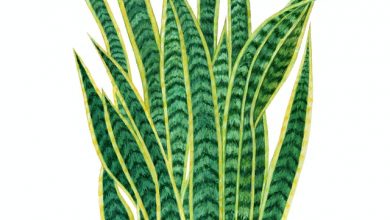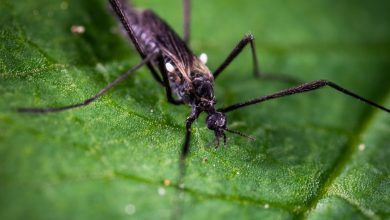How to Kill Dandelions for Good

As a kid, dandelions are bright and pretty flowers that turn into fun seed-blowing plants later in the year. But once you have your own house, they can be the bane of your lawn’s existence. That is, unless you have the patience to wait a couple of years for dandelion wine to ferment or you plan to harvest their leaves for salad.
Assuming neither of those scenarios is an option, you are going to want to get dandelions out of your yard as soon as possible. Once they go to seed, those tiny little spores can fly all across your yard, allowing this weed to take over your grass in a short amount of time. Luckily, dandelions can be killed for good, and all it takes are some ingredients you most likely have lying around your house.
Dandelions belong to a family of weeds, which are referred to as broadleaf perennials, a notoriously hardy and difficult class of weeds to kill. The main reason for the dandelion’s resistance to removal is a deep root system that will always grow back if left in the ground.
Of course, you could always buy a weed-killing chemical from your local hardware store. But the chemicals in those weed killers can be harmful to your pets, wildlife, and waterways.
The best time to attack your dandelions is early in the season. If you wait too long and they go to seed, as many as 2,000 seeds are released each year by just one plant alone.

Digging Up Dandelions
Digging up the dandelions yourself is the most labor-intensive way to kill them for good, but it’s also one of the most effective, as long as it’s done correctly.
Do not pull the dandelion up with your hand without a plan. If you simply remove the top part of the plant, even if you pull out some roots, the dandelion will grow back, if not this season, then next season. A dandelion’s root, called a taproot, can grow to 18 inches long. And if you do not remove the full root, you will be dealing with the same problem all over again.
As with any weed, dandelions are easiest to pull out when the soil is wet. A good time to attack your dandelions is after a lengthy amount of rain has soaked up your soil. If the soil is dry, take a watering can and pour it over the plant to loosen it up.
Next, you will want to have a weed knife on hand. A weed knife looks similar to a kitchen knife. The key is to get a knife that has a blade of at least seven inches long to make sure you can dig deep enough. Work the blade of the knife around the base of the plant in a few different places and twist the knife to push the soil away from the taproot.
Finally, grab the base of the plant in your hand and gently pull up. If you feel resistance, work the knife around the soil again. The last thing you want to do is pull too quickly and leave a portion of the taproot buried in the soil.
You will now be left with a hole in the ground, so fill the area back up with soil. This area will now be susceptible to new weeds invading, so adding grass seed to the soil will help to patch it up.

Dandelion Removal Tool
An alternative to the more labor-intensive method above is to use a dandelion removal tool, which you can find at your local hardware store. The tool will have a long handle – the longer, the better for more leverage – and a forged steel piece coming out of the bottom. The steel blade will look like a forked snake’s tongue, which is extremely useful for surrounding the root of the dandelion.
The key is to make sure the forked blade is surrounding the base of the root, so it may take a little practice. Identify where you want to dig, insert the blade, and press down. Now, push down on the handle. The tool will act as a lever that removes the dandelion from the bottom of the root.
Depending on how deep you have to go, it can take a little effort to remove the plant. But this is also one of the most efficient ways to repeatedly kill your dandelions for good without the use of chemicals or other mixtures, which we will get to below.
Boiling Water
Believe it or not, simply boiling water and pouring it on dandelions can kill them for good. By pouring boiling water on a dandelion, you can kill the plant from top to bottom. The yellow flower and stem will curl and die, and the boiling water will damage the dandelion’s roots. With no upper leaves to soak up the sun and damaged roots unable to take in nutrients from the soil, the entire dandelion plant will die and not come back.
The downside of this method is the amount of time it would take to boil and transport water. If you want to kill a stubborn patch of dandelions and it’s not too far from your kitchen, though, this is the easiest way to kill dandelions for good.

Add Salt
Warning: only add salt in an area where you do not want grass to grow. But if you have dandelions growing through cracks in the concrete or in any area where nothing else is growing, salt can be a quick and highly effective way to get rid of dandelions for good.
You can either take a teaspoon of salt and place it directly on the base of the plant or combine it with one cup of water. Mixing with water can help soak the salt into the ground, but it can also be harder to control the total area that will be affected by the salt. So again, if you have nearby grass or plants, you may not want to use the salt option.
If using only salt, place it at the base of the plant when the plant and soil are completely dry. You may need to apply more salt if it blows away or rain washes it away.
Add Vinegar
Unlike salt, vinegar will not harm the future viability of growing plants in the soil. The key aspect of using vinegar is its acidity. Pouring vinegar on the dandelions will temporarily change the acidity of the soil enough to kill the plant.
Try a Vinegar Mixture
Pickling vinegar is the most effective due to a higher acidity level than white vinegar. A highly efficient combination is to mix together equal parts boiling water and pickling vinegar and pour the mixture on the dandelions.
Use Rubbing Alcohol
If all you have on hand is rubbing alcohol, this can also be an effective weed killer. Take two tablespoons of the rubbing alcohol and dilute it in four cups of water. Transfer the solution to a spray bottle, and you’ll have a quick and easy weed killer to spray all over the dandelion.
Mulch
If you are dealing with weeds in garden beds, mulch is a must. Weeds will still grow through the mulch, but they can also be easily spotted and dealt with. Mulch also helps to hold in moisture for the soil below it, which helps the rest of the plants in the garden bed. Try to keep a two-inch layer of mulch at all times. After removing a dandelion, make sure to cover the area back up with more mulch.
Keep Your Lawn Healthy
Removing dandelions from your lawn is only step one. In order to make sure that new weeds don’t come back into the area, you will want to strengthen your lawn. A strong, healthy lawn can be its own best defense against invasive weeds.
A healthy lawn can be attained by a proper watering schedule, fertilization, and cutting the grass to the correct length.
Try to cut just a third of the grass blades at a time, which will help promote better photosynthesis. If you cut too low, your grass can also dry out faster. It can be helpful to leave grass cuttings on your lawn as a natural fertilizer, but it can be harmful if you end up leaving clumps of grass on the lawn, which can kill the grass below.
Watering your lawn deeply can also promote a strong and deep root system, which will help to continually keep weeds at bay.
Lastly, fertilizing your lawn is a must. But you should make sure to fertilize based on the type of grass you have. Fescue, for example, is a cool-season grass, which should be fertilized in the fall. Warm-season grasses include Bermuda, Centipedegrass, Bahiagrass, and Carpetgrass. The type of grass you have will determine both when to fertilize it and exactly what fertilizer to use.



